By Dan Weisz
While not easily seen or common, we do have raccoons in the Foothills. Raccoons do quite well in the Sonoran Desert as long as there is a source of water nearby. They are nocturnal and usually sleep during the day.
I made an effort to get to Sweetwater early one morning in hopes of finding the raccoon family last week. My efforts paid off! First, I circled the park, checking out all of the ‘regular’ spots but found nothing. I retraced my steps and saw that three raccoons were digging through the dirt under a mesquite tree off to the side of one of the ponds. As I walked around the far side of the tree, one raccoon crossed over and disappeared into the reeds. I positioned myself down the trail so there was a clear path from the shade of the mesquite tree to the large pond and reeds. In a few minutes, my hunch was rewarded. The second of the raccoons casually made its way across the path to the ponds.
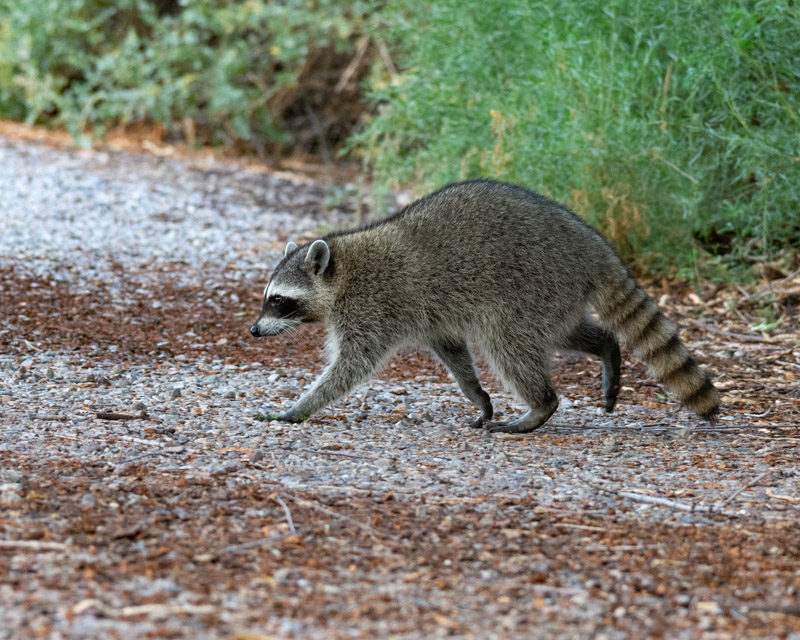
It turned to look back at the last raccoon as if beckoning it, and then strolled into the reeds.
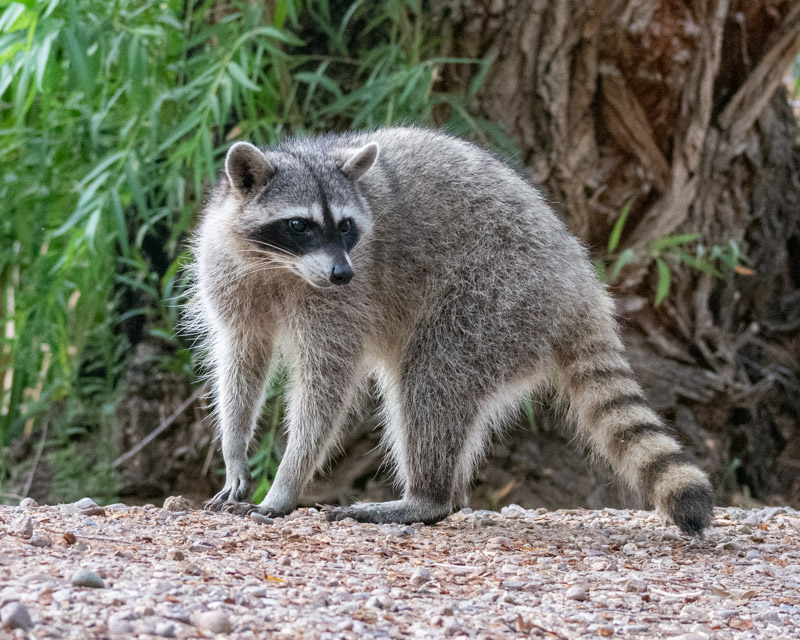
Finally, the last very young raccoon slowly came out into the open.
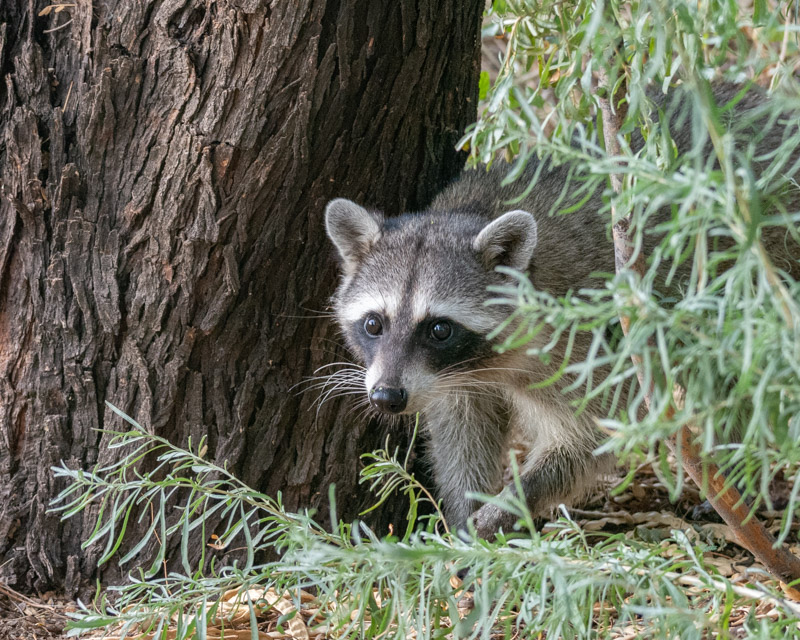
It disappeared into the reeds. I waited in hopes that the raccoons would reappear in a nearby area where they had been seen earlier in the week. After a long period of silence in the wetlands, I decided to move on, glad that I had seen the raccoons briefly but certain that I would not see them any more that morning.
I met up with the Wednesday morning Tucson Audubon Birding group and shortly afterwards, we came across the two young raccoon kits lolling around on some flattened cattails. They watched us as we watched them. The one on the left looks very interested while the one on the right seems to be a very laid-back raccoon. In this photo we have cattails and coon’s tails.
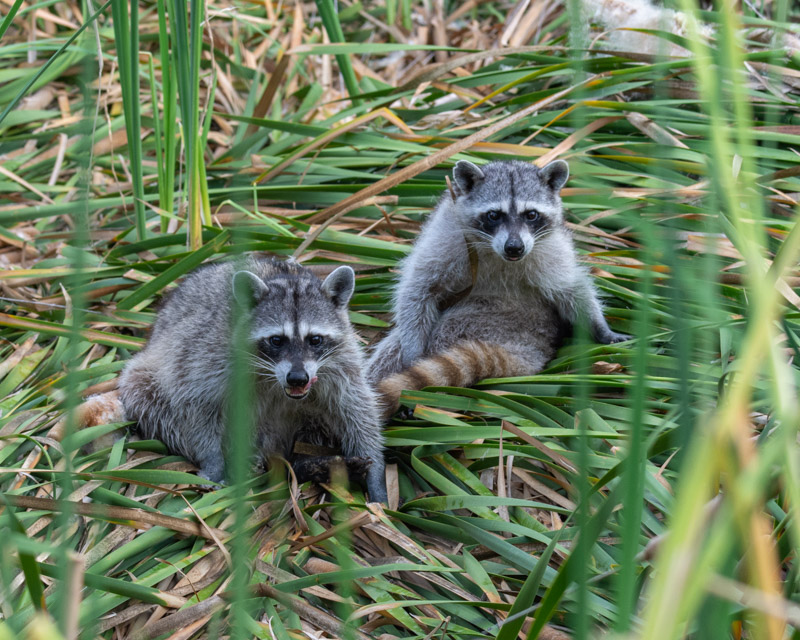
Soon, the kits (as they are called) began interacting and began grooming each other. It looks as if they first whispered their plans to each other.
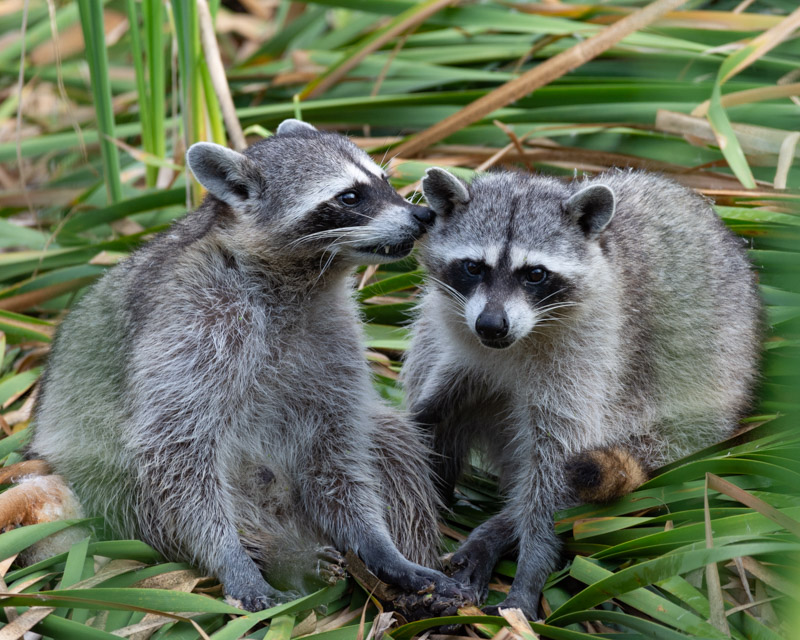
And so the mutual grooming began.
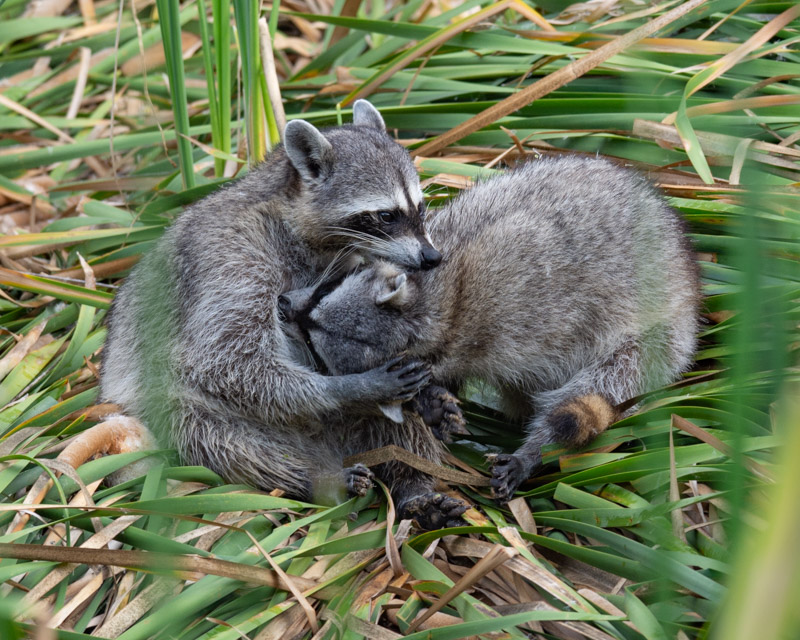
And continued for several minutes while they ignored us, our voices and the clicking of cameras.
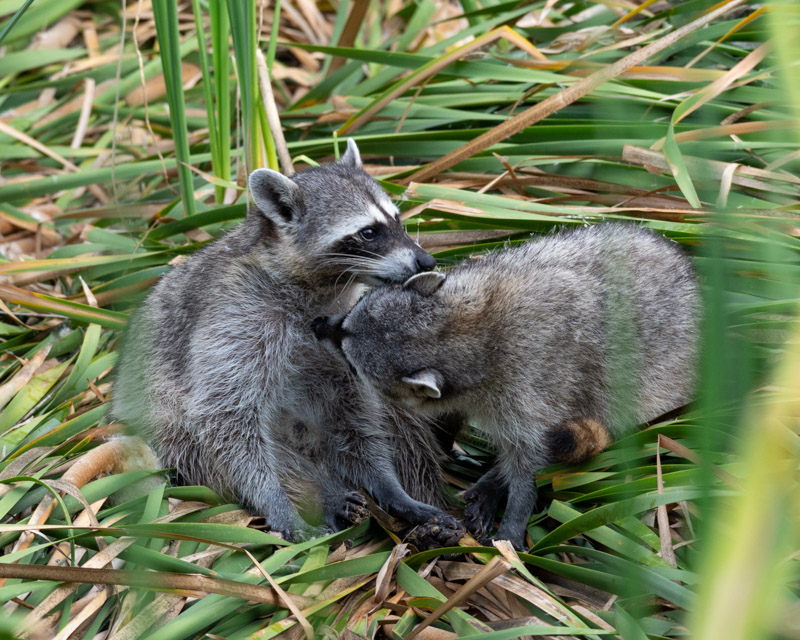
Until they had enough.
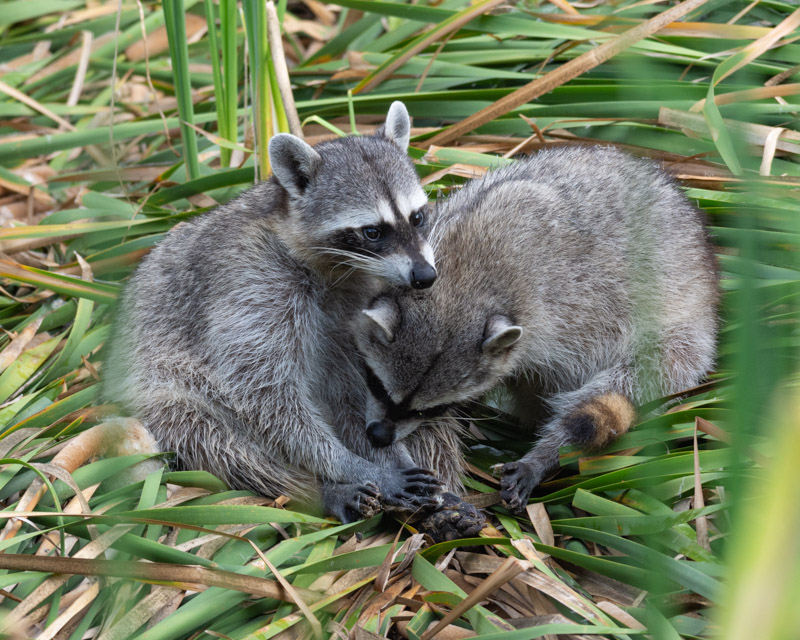
Although by then, there were only a few humans left watching and the raccoons seemed interested in learning what they could about us.
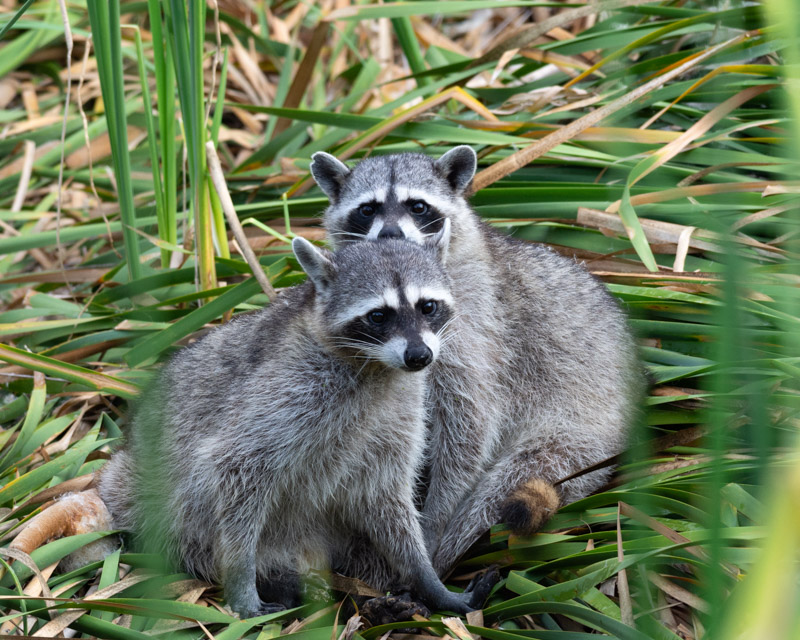
Twins!
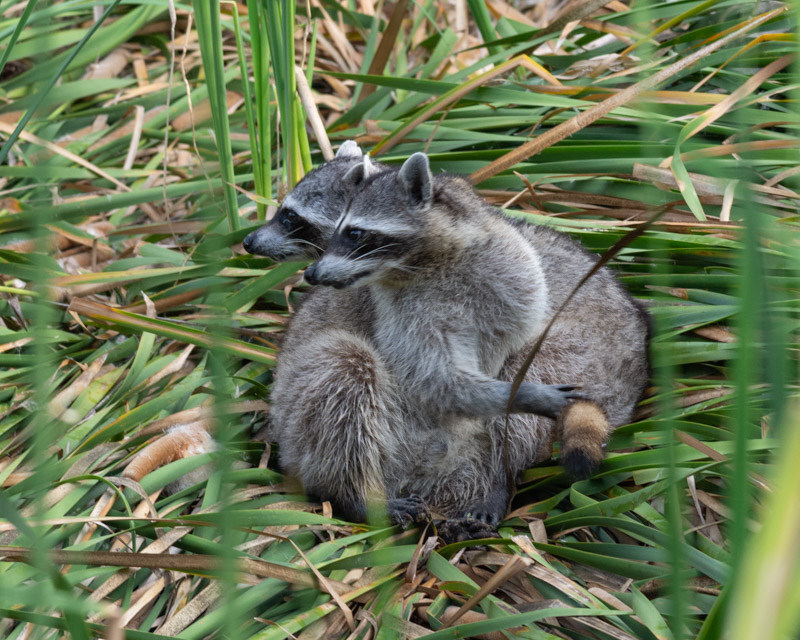
And one raccoon left for a more secluded spot. Its sibling remained behind, assuming that laid-back posture.
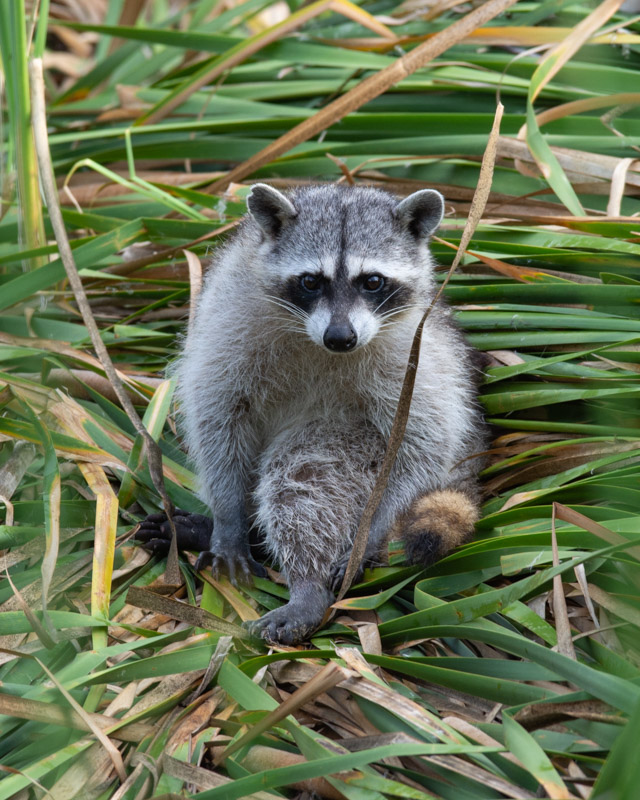
Then it turned back to its sibling and silently said “yes!” and wandered off.
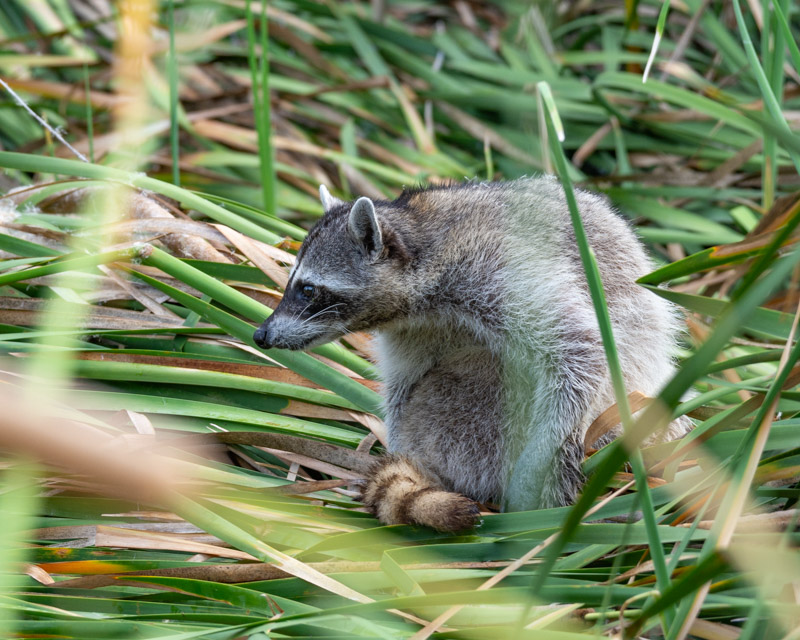
Circling the small pond, I did locate the two raccoon kits at rest in a tucked away corner of the pond.

I said my goodbyes and moved on.
One of the fellows who was with us is very knowledgeable about birds and animals. He is also from the South, where raccoons are much more prevalent. I asked him what we should call this family of raccoons. He said that when there is a number of raccoons together, they are called “some raccoons”. Just like a group of crows is called a “murder of crows” and a group of deer is called a “herd of deer,” a group of raccoons is called “some raccoons”. It sounded reasonable, but then he added “when you see more than eight raccoons together, that’s called “a whole bunch of raccoons.” “ I may have to check with Google before sharing this information.
For more on Raccoons, check out the PBS Nature Series show “Raccoon Nation” at:
This episode is introduced with this intriguing statement: “Are human beings, in an effort to outwit raccoons, actually making them smarter and unwittingly contributing to their evolutionary success? Are the ever more complex obstacles that our fast-paced urban world throws at them actually pushing the development of raccoon brains? In this film, scientists from around the world share their thoughts and work to explore this scientific theory. Attempting to do something that has never been done before, they closely follow a family of urban raccoons as they navigate the complex world of a big city.”
Return to Foothills Clusters Home
